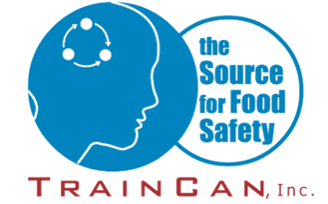10-Year Analysis of Fish Salmonella Outbreaks Underlines Need for Better Import Traceability
Article By Bailee Henderson Published August 11, 2025
Article Source: https://www.food-safety.com/articles/10588-10-year-analysis-of-fish-salmonella-outbreaks-underlines-need-for-better-import-traceability
Fish and fishery products have been increasingly implicated in multistate Salmonella outbreaks over the last decade. To better understand the characteristics and contributing factors of these outbreaks, researchers from the U.S. Food and Drug Administration (FDA) and the U.S. Centers for Disease Control and Prevention reviewed foodborne illness outbreak investigation data from 2012–2021.
Using CDC’s National Outbreak Reporting System (NORS); System for Enteric Disease Response, Investigation, and Coordination (SEDRIC); and PulseNet databases, the researchers accessed foodborne illness outbreak investigation records for multistate Salmonella outbreaks linked to fish and fishery products (excluding raw molluscan shellfish). Data included epidemiologic interviews and case information, laboratory testing of clinical and food samples, inspections and environmental sampling, and traceback activities.
Between 2012 and 2021, there were five confirmed multistate Salmonella outbreaks associated with fish and fish fishery products, three of which were linked to frozen tuna, one to frozen shrimp, and one to fresh seafood. In four of the five confirmed outbreaks, the outbreak strain was detected in products imported from India, Indonesia, and Vietnam. The fifth confirmed outbreak had an environmental sample that yielded the outbreak strain.
In addition to the five confirmed Salmonella outbreaks, there were four additional multistate Salmonella outbreaks with fish and fishery products identified as a suspected vehicle of illness, two of which were associated with frozen tuna, one with smoked fish, and one with fresh tuna and salmon.
In total, the outbreaks caused 721 cases of illness, with 104 hospitalizations.
Some of the most common contamination factors identified in the outbreak investigation data included the use of contaminated water in manufacturing food and ice; using water hoses that create overspray, which may cross-contaminate food and food contact surfaces in the processing areas; and inadequate cleaning and sanitizing. Additionally, exposure to birds, insects, and other pests in processing environments was noted in some cases, as were improperly sanitized surfaces and cutting tools.
The researchers also noted significant traceback difficulties faced during the outbreak investigations, especially with imported seafood due to fragmented supply chains and poor documentation.
Based on their findings, the researchers underlined the need for improved sanitation practices in seafood processing; better traceability systems, especially for imported products; and stronger collaboration between regulatory agencies and industry to prevent future outbreaks. The study reinforces the importance of environmental controls and food safety education across the seafood supply chain.
The study was published in the Journal of Food Protection.
